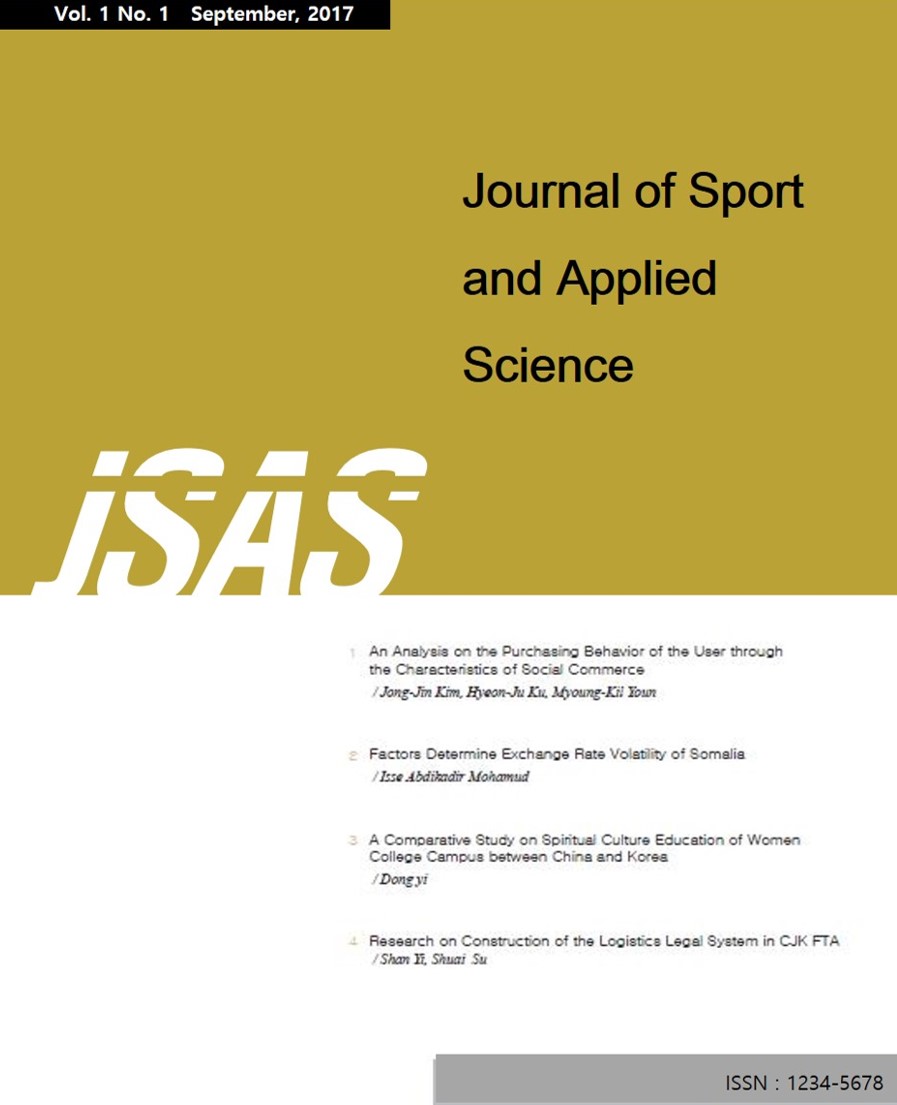- Log In/Sign Up
- E-ISSN2586-6028
- KCI Candidate
 E-ISSN : 2586-6028
E-ISSN : 2586-6028
Vol.3 No.2
Abstract
Purpose: With an increase of concerns towards leisure activities, water sport participation is constantly increasing. The purpose of this study is to examine the effects of exercise commitment on leisure satisfaction. Research design, data, and methodology: To accomplish the purpose, the study collected data from undergraduate students who participated water sports class in University. The sample was extracted by purposive sampling of nonprobability sampling. 281 students participated in the survey. Data were computed via correlation test, factor analysis, Cronbach's α test, one way ANOVA, and regression. Significance of all results was set to p<.05. Results: The results are like below. Frist, in terms of differences by demographics, the results indicated that significant difference between exercise commitment and leisure satisfaction by gender was shown only in psychological factor in leisure satisfaction. Second, in terms of the relationship between commitment and satisfaction, the findings pointed out that significant difference between exercise commitment and leisure satisfaction by grade was observed only in leisure satisfaction, especially on the educational part. Third, the study revealed that no significant difference by participation level was shown. Conclusions: In conclusion, the study posits that exercise commitment play a function in increasing the leisure satisfaction. Further implications were discussed.
Abstract
Purpose: New sports is a modified physical activity which is developed for participants to easily learn and play. This study is to analyze distribution channels and related strategies of Korea new sports and to discuss strategies for promoting Korea new sports, especially for two-two ball. Research design, data, and methodology: The study reviewed literatures including documents of Dae-Han two-two-ball association and new sports related research articles. Results: First, Dae-Han two-two-ball association has introduced two two ball to consumers via educational organizations such as schools and youth education sectors. Second, Dae-Han two-two-ball association has introducted two two ball to school teachers by teacher training sessions. Third, Dae-Han two-two-ball association has educated future instructors and provided certificates to them. Fourth, Dae-Han two two ball association has applied governmental projects and sought to promote domestic new sports. Finally, Dae-Han two two ball association has hosted national events every year for facilitating Korea new sports across nation. Conclusions: In conclusion, Korea new sports shoud be spread out by school teachers and educational organizations. Two-two ball association needs to develop a systematic educational and managerial process for training instructors. Finally, Two-two ball association needs to make opportunities of teacher training sessions. Future directions were discussed.
Abstract
Purpose: This study is to conduct usability evaluations from the perspective of developing comfort-shoes for the middle-aged and elderly to identify key factors and derive implications for optimal comfort-shoes production. Research design, data, and methodology: A total of 10 middle-aged and elderly women in their 50s and 60s were selected as eligible for the rescue. For data collection, the study was conducted in a Gang Survey, where pre-explanations, shoes test, and interviews were conducted. The collected data were analyzed in a total of four stages. In step 1, the contents obtained through interviews with the subjects were recorded in text, organized and analyzed systematically, and in step 2, unnecessary vocabulary, sentences, and overlapping opinions were eliminated. In step 3, we classified areas around key functions and carried out categorization tasks. Finally, in Step 4, the results and implications of the study were derived by classifying each usability evaluation shoe as positive and negative text around categorized data. Results: There are a total of seven factors for comfort-shoes usability evaluation, which are categorized as cushion, fitting, stability, flexibility, lightweight, comfort, and pressure. Positive/negative factors for the derived usability evaluation factors were shown in the form of a positive-centered, negative-centered, and positive-mixed mix for each of the four products. Positive-focused products are VA products, which are seven times more positive than negative factors. Negative-centered products are CL and SA products, which are five times more negative than positive factors. Positive mixing was a CA product with a ratio of 1:1. Text-based usability evaluations allow us to proceed with analysis based on more scientific data rather than simply listening to opinions and judging by comments. Conclusions: The study discussed implications of developing comfort-shoes for middle-aged consumers and future directions were discussed.













